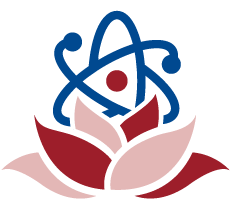| bone matrix རུས་པའི་དྲ་འཛིངས། | biol. The intercellular substance of bone tissue consisting of collagen fibers, ground substance, and inorganic bone salts. | རུས་པའི་ཕུང་གྲུབ་ཀྱི་ཕྲ་ཕུང་དབར་གྱི་བེམ་རྫས་ལ་གོ་ཞིང་། སྦྱར་སྤྲིའི་རྩིད་སྐུད་དང་། བེམ་རྫས་ཞིབ་ཞིབ། རུས་པའི་སྐྱེ་ལྡན་མིན་པའི་ཚྭ་བཅས་ཀྱིས་གྲུབ། |
| bone marrow རྐང་མར། | biol. The soft tissue that fills most bone cavities and consists of yellowish fatty tissue or reddish vascular tissue. In adult mammals, the bone marrow of certain bones is the location of stem cells that give rise to the red blood cells, white blood cells, and platelets. | སེར་མདོག་གི་ཚིལ་ཅན་ཕུང་གྲུབ་དང་དམར་མདོག་གི་སྦུ་གུའི་ཕུང་གྲུབ་ཀྱིས་གྲུབ་ཅིང་རུས་པའི་ཁོག་སྟོང་ཕལ་ཆེ་བ་འགེང་བྱེད་ཀྱི་ཕུང་གྲུབ་སོབ་སོབ་དེ་ལ་གོ་ཞིང་། ནུ་གསོས་སྲོག་ཆགས་དར་མའི་ནང་དུ། རུས་པ་ངེས་ཅན་ཁག་ཅིག་གི་རྐང་མར་ནི་ཁྲག་དམར་ཕྲ་ཕུང་དང་། ཁྲག་དཀར་ཕྲ་ཕུང་། ཁྲག་ཞིབ་བཅས་སུ་འགྱུར་ཐུབ་པའི་མ་རྐང་ཕྲ་ཕུང་གནས་ས་ཡིན། |
| bonding འཆིང་སྦྱོར། | chem. The combining of atoms to form molecules or ionic compounds. | འདུས་རྡུལ་ལམ་གྱེས་རྡུལ་གྱི་འདུས་རྫས་གྲུབ་པའི་ཆེད་དུ་རྡུལ་ཕྲན་མཐུད་སྦྱོར་བྱེད་པ་ལ་གོ |
| bond འཆིང་བ། | chem. A strong force of attraction holding atoms together in a molecule or crystal, resulting from the sharing or transfer of electrons. | གློག་རྡུལ་མཉམ་སྤྱོད་དམ་འཕོ་ལེན་བྱས་པ་ལ་བརྟེན་ནས་འདུས་རྡུལ་ལམ་དྭངས་གཟུགས་ཤིག་ཏུ་རྡུལ་ཕྲན་རྣམས་དམ་པོར་འཛིན་པར་བྱེད་པའི་འགུགས་ཤུགས་དྲག་པོ་ཞིག |
| BOLD activity ཁྲག་གི་འཚོ་རླུང་ལྟོས་འགུལ། | biol. | |
| boiling point ཁོལ་ཚད། | phys. The temperature at which a liquid boils and turns to vapor. | གཤེར་གཟུགས་ཤིག་ཁོལ་ཏེ་རླངས་པར་འགྱུར་བའི་སྐབས་ཀྱི་དྲོད་ཚད་ལ་གོ |
| boiling ཁོལ་བ། | phys. Change from liquid to gas occurring beneath the surface of the liquid; rapid vaporization. The liquid loses energy, the gas gains it. | གཤེར་གཟུགས་ཀྱི་ཕྱི་ངོས་ཀྱི་འོག་ནས་གཤེར་གཟུགས་དེ་རླངས་གཟུགས་སུ་འགྱུར་བ་སྟེ་མགྱོགས་པོའི་རླངས་འགྱུར། གཤེར་གཟུགས་ནས་ནུས་པ་བརླགས་ཤིང་རླངས་གཟུགས་ལ་ནུས་པ་ཐོབ་ཀྱི་ཡོད། |
| body temperature ལུས་དྲོད། | biol. The level of heat manufactured by the body. | ལུས་ཀྱིས་སྐྱེད་སྐྲུན་བྱས་པའི་ཚ་དྲོད་ལ་གོ |
| body mass index ལུས་གདོས་སྟོན་གྲངས། | biol. Body mass index (BMI), an estimate of total body fat. The BMI is defined as weight in kilograms divided by the square of the height in metres: weight/ height2 = BMI. | ལུས་གདོས་སྟོན་གྲངས་ནི་། ལུས་པོ་ཡོངས་སུ་ཡོད་པའི་ཚིལ་ཞག་མང་ཉུང་གི་ཚོད་རྩིས་ཤིག་ལ་ཟེར། ལུས་གདོས་སྟོན་གྲངས་ནི་ཀི་ལོ་གྷ་རམ་ནང་འཇལ་བའི་ལྗིད་ཚད་དེ་མི་ཊར་ནང་འཇལ་བའི་རིང་ཚད་ཀྱི་ཉིས་སྒྱུར་གྱིས་བགོ་དགོས་པ་ཡིན། ལྗིད་ཚད་/རིང་ཚད་ ༢ = ལུས་གདོས་སྟོན་གྲངས། |
| body clocks ལུས་ཀྱི་དུས་འཛིན་འཁོར་ལོ། | neurosci. An internal physiological mechanism that controls certain biological rhythms in plants and animals, including humans, such as metabolic changes, sleep cycles, and photosynthesis. | རྩི་ཤིང་དང་མིའི་རིགས་ཚུད་པའི་སྲོག་ཆགས་ཀྱི་ནང་དུ་ནུས་སྒྱུར་གྱི་འགྱུར་བ་དང་། གཉིད་ཀྱི་རྒྱུན་འཁོར། འོད་སྦྱོར་ལྟ་བུའི་སྐྱེ་དངོས་ཀྱི་འཁོར་འགྲོས་ངེས་ཅན་ལ་ཚོད་འཛིན་བྱེད་པའི་ལུས་ཁམས་ཀྱི་ལས་ཚུལ་ཞིག |
| blueshift སྔོ་སྤོ། | phys. The displacement of the spectrum to shorter wavelengths in the light coming from distant celestial objects moving toward the observer. | ཐག་རིང་གི་མཁའ་དབྱིངས་དངོས་པོ་ཞིག་རྟོག་ཞིབ་པའི་ཕྱོགས་སུ་ཡོང་བའི་སྐབས་སུ་དངོས་པོ་དེ་ནས་འཕྲོས་ཡོང་བའི་འོད་ཟེར་གྱི་འོད་ཤལ་དེ་རླབས་ཐག་ཐུང་བའི་ཕྱོགས་སུ་གནས་སྤོ་བྱེད་པ་དེ་ལ་གོ |
| blueprint སྐྱ་ཐིག | A design plan or other technical drawing. | བཟོ་བཀོད་ཀྱི་འཆར་གཞིའམ་བཟོ་ཐབས་ཀྱི་རི་མོ་ཞིག |
| Bluebird བྱ་སྔོན། | phil. | |
| Blue-hot སྔོ་ཚ། | Phys. | (སྔོ་ལ་ཚ་བ།) |
| blue whale ཝེལ་སྔོན། | biol. The largest animal ever to have lived on earth, weighing about 150 tons and measuring up to 100 feet long; it has remarkable speed and agility for its size and ranges in all oceans from polar seas to the equator; an endangered species. | སའི་གོ་ལའི་སྟེང་དུ་འཚོ་གནས་བྱས་དང་བྱེད་བཞིན་པའི་སྲོག་ཆགས་ཁྲོད་ཀྱི་ཆེ་ཤོས་དེ་ཡིན་ཞིང་། ལྗིད་ཚད་ལ་ཊོན་ ༡༥༠ ཙམ་དང་རིང་ཚད་ལ་ཕི་ཊི་ ༡༠༠ ཡོད་པ་དང་། རང་ཉིད་ཀྱི་ཆེ་ཚད་ལ་དཔག་པའི་མགྱོགས་ཚད་དང་འཁྱུག་རྩལ་ཧ་ཅང་ཡག་པོ་ཡོད། སའི་གོའི་སྣེ་གཉིས་ནས་དཀྱིལ་ཐིག་དབར་གྱི་རྒྱ་མཚོ་གང་སར་ཁྱབ་ཡོད་པ་དང་སྟོང་ཉེན་ཆེ་བའི་ཉེ་རིགས་ཤིག་ཡིན། |
